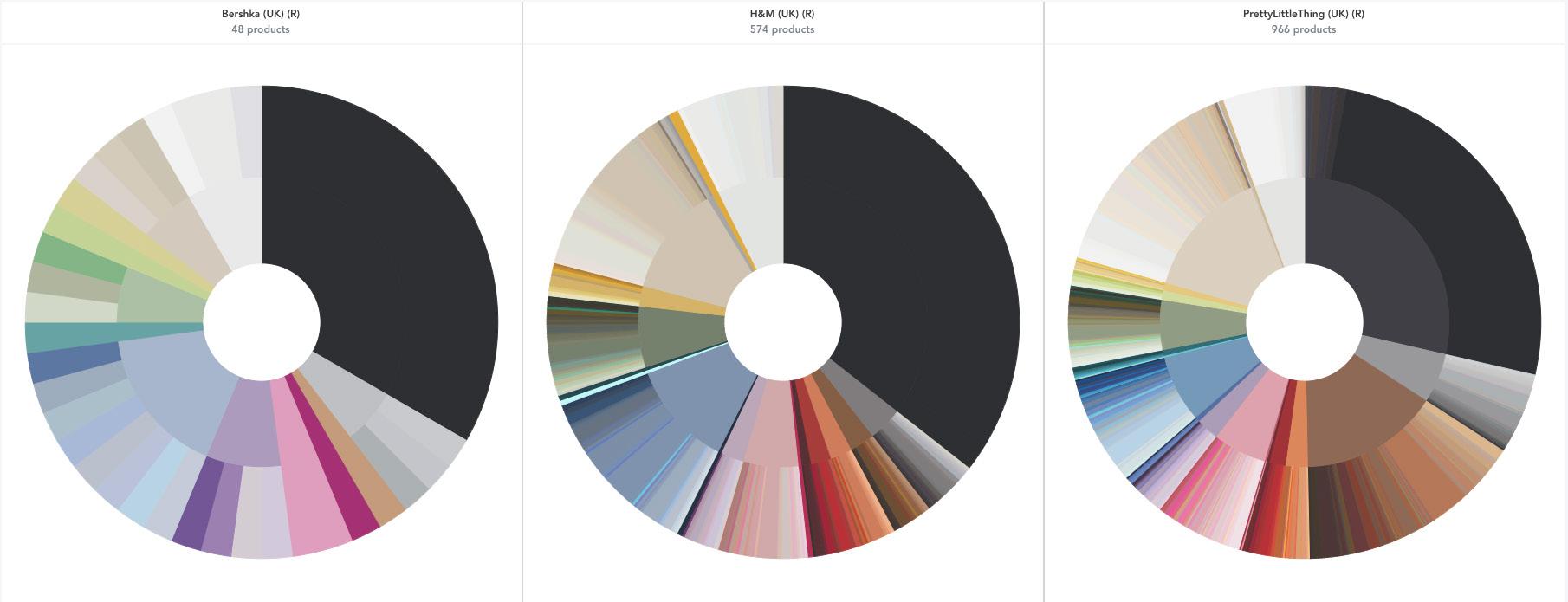
2 minute read
COMPETITIVE SHOP
Retailer Entry Price Mid Price Exit Price Average Price
Size Range Bershka £14.99 £21.05 £27.99 £21.32 4-14 XS-XL
Advertisement
£5 £15 £25 £15 4-20 XS-XL
H&M £9.99 £22.48 £149.98 £60.81 4-22 XS-XL No. of Products Analysis
38 H&M has the largest numerical size range of the three retailers; however their alpha sizing does not stretch as far as their numerical sizing and matches the other two retailers. Bershka has the smallest sizing range of the three retailers and does not cater for many women as, “The average woman in the UK is a plus size UK 16” (Fashion United 2020). This means that Bershka do 1217 not even cover the average UK woman and are missing out on a huge consumer base.
537 Pretty Little Thing have the cheapest garment compared to the other two retailers, allowing them to appeal to a wider consumer base like students and teenagers, while H&M’s most expensive garment is £149, over x6 the highest price of their other two competitors. This will deter some consumers as it is more of a premium or luxury price point, and not something that consumers would expect to pay for a H&M garment.
Retailer Garment Price Fabric Composition Sourcing Size Range Analysis
£19.99 98% Cotton 2% Elastane China 4-14 Comparing the three denim skirts, the prices are very similar across all three brands, and the fabric composition is too. This contradicts the overall analysis as Pretty Little Thing’s skirt is the most expensive, however their average price is the lowest. Bershka and H&M’s skirts are the same style, whereas Pretty Little Thing’s skirt has a more intricate design with seams down the front so would use more fabric to produce, which could be the reason it is the most expensive of the three.
£20 100% Cotton China 4-16
£17.99 100% Cotton China 4-22 All of the styles are made in China, so this would be another reason for the similar price points. H&M have the largest size range again across all three brands so they would be selling to the largest consumer base; allowing them in theory to make the most revenue. Bershka and Pretty Little Thing cater for sizes up to a 14 and 16, so Bershka is not even covering the average UK woman, and Pretty Little Thing is only just covering the average size but not going above it. These two brands are decreasing their consumer base by only offering these sizes, and possibly putting them off shopping with the brand as they can not buy their size in all garments.
Shown in figure 8 the three brands use similar colours throughout the skirt category, however the overriding colour is black. For the summer season this is surprising, but it could be because of patterns used in skirts. Neutrals follow closely behind, and with the current trends of nature through the WGSN macro trend resourceful these colours are easily justified. H&M and Pretty Little Thing have a much wider range of bright colours than Bershka, however this could be due to the larger product range the other two brands stock.
Figure 8 (Edited 2021)










